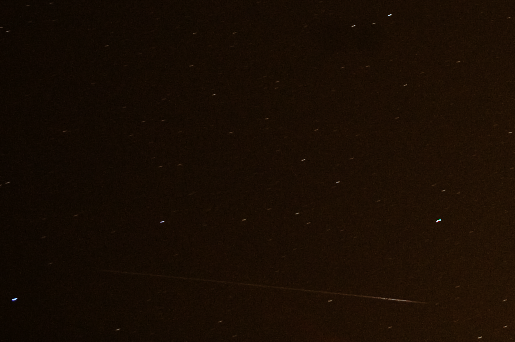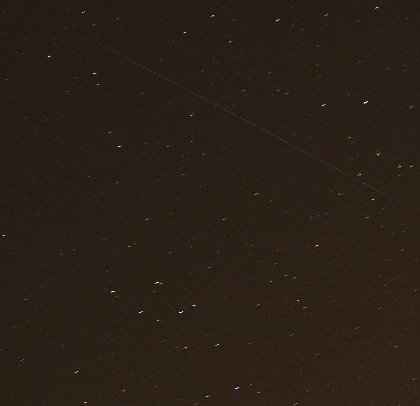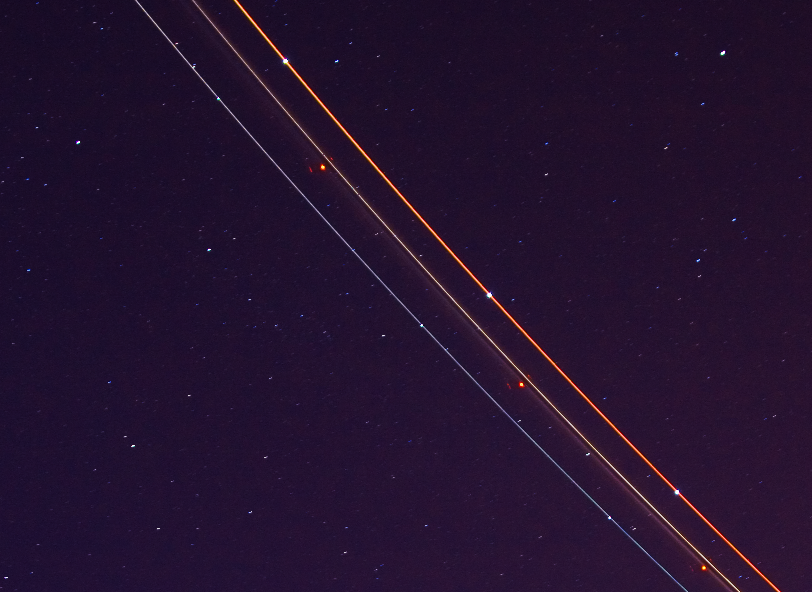Perseid meteors, 12th August 2007
I spent nearly nearly an hour on Sunday night, 12th August, from 22:15 to 23:15 taking photos. I took about 80 30-second photos with a 24mm (fairly wide angle) lens at f4, ISO 400. I had the camera fixed on a tripod looking in the direction of Cygnus - ie, about 90 degrees from the radiant in Perseus, so any meteors should be going across the field of view rather than coming towards me.
During that time I saw 8 meteors, a couple of which were very bright. I wasn't sure whether any had crossed the field of view of the camera. I have now had a look through the photos and found one which definitely contained a meteor, near the bottom edge of the frame. Here is a cropped extract, scaled down by 50%:

Canon EOS5D 24-105mm lens @ 24m 30s f/4 ISO400 2007:11:07 22:00:29
I wonder why there is a small break in the track just before the brightest part?
Several of the photos have satellites crossing them. They do not have the changing width and brightness of the meteor and in most cases they continue from one photo to the next, because of the wide field of view. Here is an example (also cropped and scaled down):

Canon EOS5D 24-105mm lens @ 24m 30s f/4 ISO400 2007:11:07 21:48:28
Shortly after dark, when the sun is still illuminating them, a lot of satellites can be seen going across the sky so it is not hard to photograph them.
One photo has a low-flying plane going right across it, not quite what I wanted but striking. Here is a cropped and scaled down extract:

Canon EOS5D 24-105mm lens @ 24m 30s f/4 ISO400 2007:11:07 21:27:47
In the top right corner of that photo the bright star is Vega, in the constellation of Lyra. Also visible is the cross shape of Cygnus, which the plane flies over.

